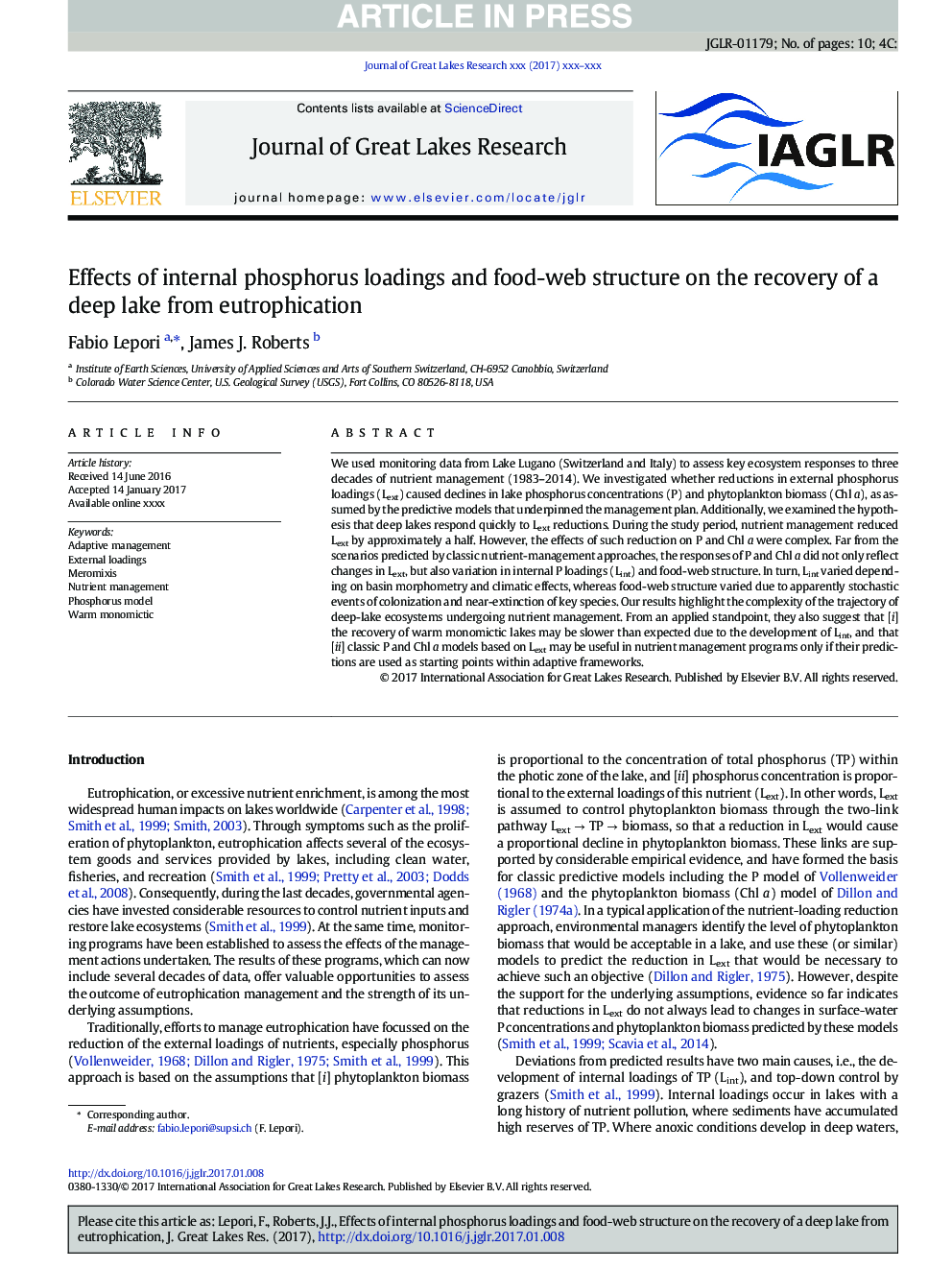| Article ID | Journal | Published Year | Pages | File Type |
|---|---|---|---|---|
| 5744723 | Journal of Great Lakes Research | 2017 | 10 Pages |
Abstract
We used monitoring data from Lake Lugano (Switzerland and Italy) to assess key ecosystem responses to three decades of nutrient management (1983-2014). We investigated whether reductions in external phosphorus loadings (Lext) caused declines in lake phosphorus concentrations (P) and phytoplankton biomass (Chl a), as assumed by the predictive models that underpinned the management plan. Additionally, we examined the hypothesis that deep lakes respond quickly to Lext reductions. During the study period, nutrient management reduced Lext by approximately a half. However, the effects of such reduction on P and Chl a were complex. Far from the scenarios predicted by classic nutrient-management approaches, the responses of P and Chl a did not only reflect changes in Lext, but also variation in internal P loadings (Lint) and food-web structure. In turn, Lint varied depending on basin morphometry and climatic effects, whereas food-web structure varied due to apparently stochastic events of colonization and near-extinction of key species. Our results highlight the complexity of the trajectory of deep-lake ecosystems undergoing nutrient management. From an applied standpoint, they also suggest that [i] the recovery of warm monomictic lakes may be slower than expected due to the development of Lint, and that [ii] classic P and Chl a models based on Lext may be useful in nutrient management programs only if their predictions are used as starting points within adaptive frameworks.
Related Topics
Physical Sciences and Engineering
Earth and Planetary Sciences
Earth and Planetary Sciences (General)
Authors
Fabio Lepori, James J. Roberts,
